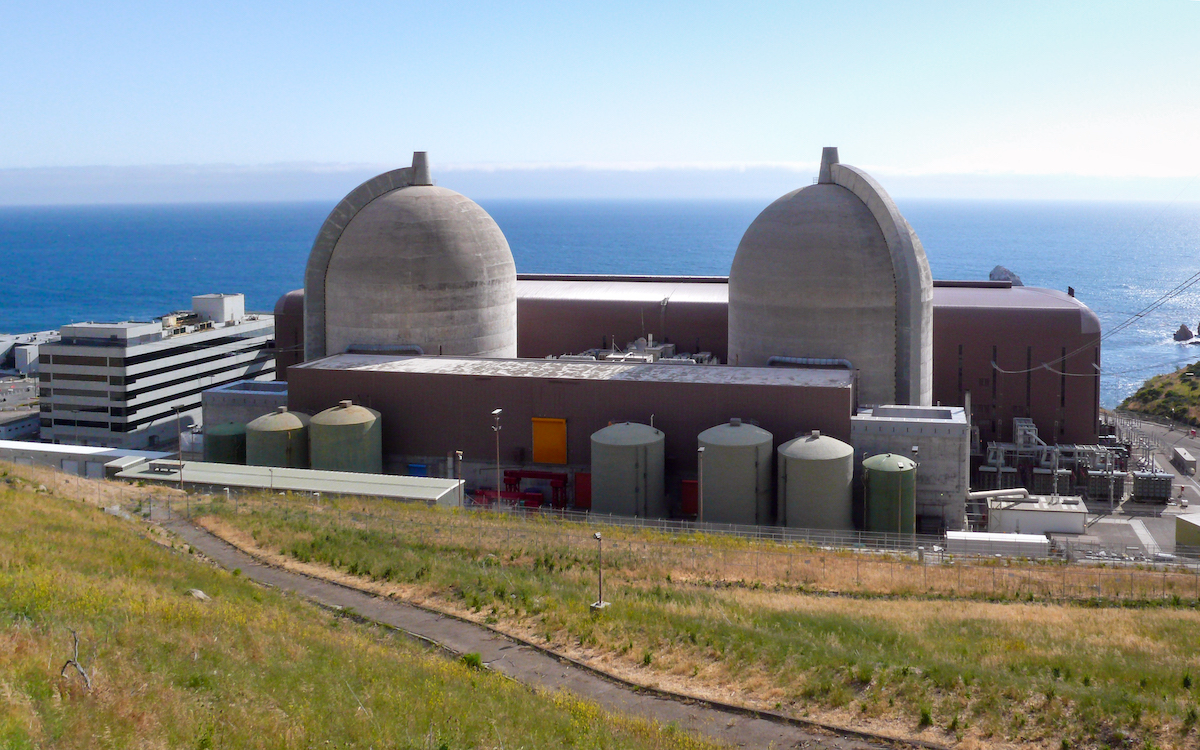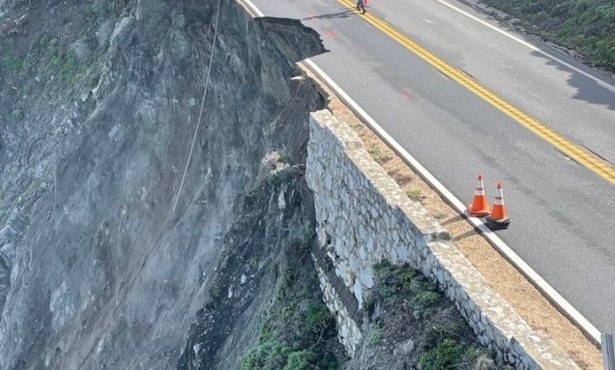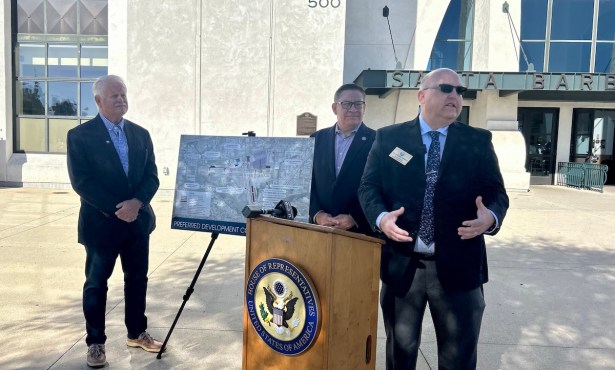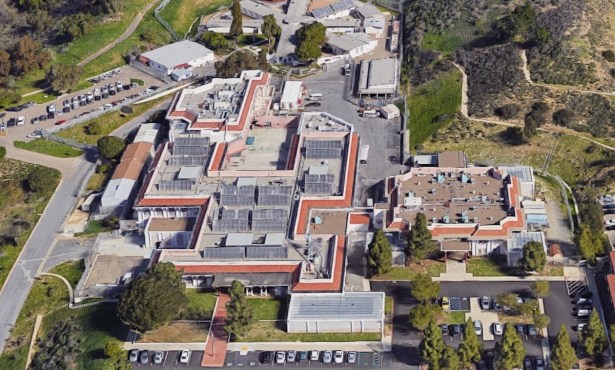Diablo Canyon Nuclear Power Plant Gets $1.1 Billion Lease on Life
Grant from U.S. Department of Energy Forestalls Planned Closure

Diablo Canyon nuclear power plant was the only beneficiary of the first round of President Biden’s Bipartisan Infrastructure Law, receiving $1.1 billion in a grant from the Civil Nuclear Credit program on Monday to help extend the plant’s lifespan beyond its impending expiration date.
The nuclear facility up the coast from Santa Barbara in San Luis Obispo County came online in 1984, and operator Pacific Gas & Electric decided in 2016 that it would not renew its license, stating economic reasons. To keep the carbon-free energy source available, Governor Gavin Newsom had persuaded the California Legislature in September to loan PG&E $1.4 billion to run the plant for at least five years past its 2025 closure date, which this new commitment from the feds reinforces.
For Newsom, the rolling blackouts of 2020 during an intense heatwave were among the reasons to keep the plant running, as well as climate change and drought leading to less hydroelectric energy and a concern that wind, solar, and battery storage were not going to be able to bridge the gap projected. Public interest polls also indicated nuclear reactors had public support, the Los Angeles Times reported. During the summer heatwaves of 2021 and 2022, the electricity operator made the same plea to Californians to conserve power during the late afternoon when solar and wind generators were less effective — and blackouts were avoided. California had added more solar, wind, and geothermal power facilities in the interval, with purchase of the generated electricity a valuable commodity for electric companies and energy cooperatives.
PG&E was seeing the new alt-energy sources as a serious competitor for electricity sales in the face of rising costs at the aging Diablo Canyon facility, which included renewing the licenses to run the plant, which expire in 2024 and 2025. In addition to the economic picture, Friends of the Earth filed a lawsuit against PG&E over seismic safety at the plant, according to the Times. A number of earthquake faults had been discovered near the plant in the decades since Diablo was built, and the environmental organization questioned whether the nuclear facility had been designed to withstand those earthquakes. In a 2016 settlement, PG&E agreed to close Diablo by 2025, and Friends of the Earth dropped its lawsuit.
But given the revival of the nuclear plant, the organization is not ruling out litigation, said Hallie Templeton, legal director for Friends of the Earth. The nonprofit’s president, Erich Pica, called the Biden administration’s decision one of a “torrent of federal subsidies and bailouts to the nuclear reactor industry. This approval comes before the State of California and U.S. Nuclear Regulatory have completed or even started their regulatory reviews,” and the group remained opposed to sustaining Diablo Canyon’s lifecycle, he said.
Sign up for Indy Today to receive fresh news from Independent.com, in your inbox, every morning.
As far as PG&E is concerned, as a regulated utility, it was “required to follow the policies of the state,” said spokesperson Suzanne Hosn, and California’s energy needs had evolved since 2016, as well. The Diablo plant would pursue the Nuclear Regulatory Commission licenses required by 2024 and 2025. Asked about costs, Hosn estimated Diablo’s energy, which is provided day and night, to be less than geothermal or biomass energy. The cost to customers of continuing to operate the plant ranged from “a charge of less than $1 a month to a bill credit of more than $5 per month, depending on market prices,” she said.
While Congressmember Salud Carbajal was indignant that the public and its congressmember had not been consulted on the possibility of extending the nuclear facility’s lifetime, over time, the lifespan was whittled from indefinite to 10 years to now five. With the news of the Biden administration funding, he stated in a press release, “In the face of record heat waves and a deepening climate crisis, there is too much at stake for us to move backward in the fight to fully transition California away from polluting fossil fuels. In the pursuit of that goal, our Central Coast community and I have understood the need to explore and support the safe and temporary extension of the lifespan of Diablo Canyon Power Plant. … While there are still remaining safety concerns that need to be addressed, including relicensing by the Nuclear Regulatory Commission, these funds — when combined with the funds made available by the California Legislature — will help ensure Diablo Canyon can safely continue operations.”
Carbajal added that the federal wind project off Morro Bay that he has been birddogging should be viable by the end of the decade. If the end of Diablo coordinates with the completion of offshore wind islands, the energy should be able to flow through the PG&E distribution lines that are now fed by Diablo. The Morro Bay project is estimated to produce 2.9 gigawatts; comparatively, Diablo’s two nuclear reactors produce 2.2 gigawatts.
Billions may not be enough to keep the longevity project in trim. The Alliance for Nuclear Responsibility Legal Fund questions why California taxpayers are giving PG&E $300 million — the company will apparently use the Department of Energy grant to offset its loan from the state. According to the Alliance’s Legislative Director David Weisman, the maintenance needed at Diablo is uncatalogued and uncalculated, and the seismic safety and review committees noted in Senate Bill 846 — which loaned the $1.4 billion to PG&E — won’t be reporting until next spring, both being state rather than federal matters. “The Alliance intends to monitor, watchdog, and evaluate all the actions at the state level for this issue,” Weisman said of the recent gyrations involving nuclear power at Diablo Canyon.
Support the Santa Barbara Independent through a long-term or a single contribution.



